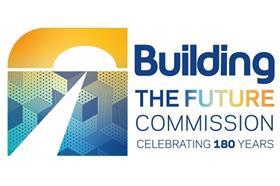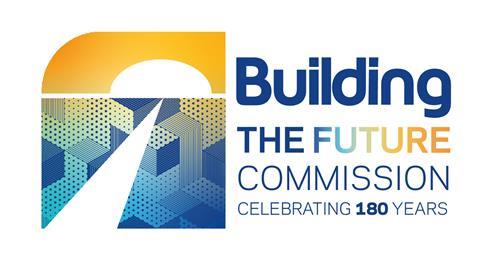Kay Hughes talks about the importance of public purpose behind infrastructure projects, the importance of technology and her love of gardening
Building magazine is 180 years old this year. What lessons about the built environment should we take from the past?

In the Victorian era large infrastructure projects, for water, rail and energy had a real sense of public purpose and supported local identity. This translated to the quality of design of the places and spaces they left.
Think of Glasgow train station, or the Victorian water pumping stations or the elegant details for on a Telford bridge. Engineering and design ran hand in hand. These are lessons from the past that we still enjoy today. Taking pride in place as well as function with a broader view is essential and a great lesson from the past.
But in 1843 the natural world was abundant and was not sufficiently valued. Integrating design to ensure that environment factors, biodiversity and zero carbon are incorporated is now mission critical. .
Who or what has had the most positive impact on construction in the past couple of decades?
Construction Design and Management regulations have reduced the numbers of accidents and fatalities on construction sites in the last 30 years. On major infrastructure projects it has led to an improved working culture although the industry still has a long way to go.
What does the construction industry do well and why?
The best operators embrace technology, spend time on design, test and prototype before committing to construction. The growth of off-site construction and the resulting quality and waste reduction are real successes. HS2 contractors demonstrate how collaborative design working and technology bring benefits to delivery.
What does construction industry do badly and why?

A lack of continuity of design and project ownership and responsibility throughout the life of some projects. Including appointing consultants for partial scopes, can lead to a lack of clear lines of accountability. In the worst instance it has contributed to tragedies such as Grenfell or in other instances has led to poor quality and inefficiency.
On large infrastructure programmes have long durations with a lot of time is spent up front framing and setting out objectives. As programmes go into delivery a project management mind set takes over. Keeping the initial objectives at the forefront of delivery can be challenging
What’s the biggest change you’ve seen during your career in construction?
Computers have changed the industry. At the beginning of my career we built and delivered projects with hand drawn drawings and typed specifications. Because there were limits on the amount of information we produced, it had to be well considered and concise.
Desktop publishing and computing methods have supported the industry to produce ever larger written volumes of processes and information. This does not always support the actual design process where value creation is achieved. But at the same time advances in 3D design mean that the “product’ can be seen and designed and interrogated holistically.
What do you think will have changed by the time Building celebrates its 200th anniversary?
I hope we will have changed the whole industry with low carbon energy technologies, and regenerative low carbon environmental design that supports biodiversity and a focus on the social improvements. This means making sure we develop integrated spatial design and planning, value landscape and move towards simple low carbon transport such as active travel where we can.
In 20 years we will be only 7 years from our 2050 net zero target. I am certain that Artificial Intelligence, digital engineering technology and automation will be the technologies that helps us get there. Helping us to do less, more effectively, share more and develop a circular economy to reduce waste.
If there is one thing individuals and firms could do to improve construction and the built environment, what would it be?
Put design, environmental and low carbon objectives first.
What is the best thing government can do to support the industry?
There are two things.
- Better client-side training for all sides involved with mega programme delivery and design delivery processes.
- Adopt more of the recommendations from the National Infrastructure Commission and bring together a committed cross governmental commitment to a long-term infrastructure strategy.
- A root and branch review of procurement . There are considerable transaction costs across the industry created by procurement. Ultimately the user pays for this. Procurement acts as a barrier to small versatile, innovative, consultants and suppliers to engage in public sector projects.
What do you hope the Building the Future Commission can achieve? And what role can you play?
A focus on strategic spatial planning to deliver infrastructure integrated with the natural world. What I mean by this is considering whether and how strategic spatial planning can more efficiently deliver public needs, energy reduction and improvements to the natural world.
I am a great believer in a lean and sustainable approach. The marriage between comprehensive spatial planning, infrastructure, and places that people live requires more focus.
What is your favourite building/piece of infrastructure and why?
Hard to pick one favourite, I have been fascinated by infrastructure for a long time.
I love the simplicity and identity of the old Leslie Green tube stations although for the 20th Century Canary Wharf underground station by Foster and Associates hits the mark. A cathedral for travelling through for millions of people.
Other examples are the north of the Olympic Park, which uses the landscape to slow water and manage flood risk, removing the need for hard, high carbon engineering. Small things done well like the Foul Sever pumping station at the Olympic Park by John Lyall are also a joy.
Ultimately though my favourite is the 2012 Olympic Velodrome in the Queen Elizabeth Park. A perfect marriage between engineering and architecture which delivers a lean low carbon building of great beauty.
Tell us one thing you are passionate about outside of work
Gardening. I have a walled garden which I am opening it up for Secret Gardens and National Garden Day this year.
Building the Future Commission

Coming up on the Building the Future commission:
In the coming weeks we will:
- Host our first regional roundtable with our partner Constructing Excellence in the East of England region in mid March
- Convene our first commissioner panel meeting at the end of March
- Interview two big hitters in the world of infrastructure for the infrastructure stream
- Examine whether the qualifications landscape needs to change and assess whether more flexibility is needed for our education and skills stream
- Investigate how for-profit affordable housing can deliver the homes we need for the housing and planning stream
- Assess a new model of procurement used by the Ministry of Defence for the project delivery and digital stream
- Look at models of flexible working in the industry for the workplace, culture and leadership stream
About the commission
The Building the Future Commission is a year-long project, launched to mark Building’s 180th anniversary, to assess potential solutions and radical new ways of thinking to improve the built environment.
The major project’s work will be guided by a panel of 19 major figures who have signed up to help guide the commission’s work culminatuing culminate in a report published at the end of the year.
The commissioner include figures from the world of contracting, housing development, architecture, policy-making, skills, design, place-making, infrastructure, consultancy and legal.
The commissioners include Lord Kerslake, former head of the civil service, Katy Dowding, executive vice president at Skanska, Richard Steer, chair of Gleeds, Lara Oyedele, president of the Chartered Institute of Housing, Mark Wild, former boss of Crossrail and chief executive of SGN and Simon Tolson, senior partner at Fenwick Elliott. See the full list here.
The project is looking at proposals for change in eight areas:
- Education and skills
- Housing and planning
- Infrastructure
- Building safety
- Project delivery and digital
- Workplace culture and leadership
- Creating communities
>> Editor’s view: And now for something completely positive - our Building the Future Commission
>> Click here for more about the project and the commissioners
Building the Future will also undertake a countrywide tour of roundtable discussions with experts around the regions as part of a consultation programme in partnership with the regional arms of industry body Constructing Excellence. It will also set up a young person’s advisory panel.
We will also be setting up an ideas hub and we want to hear your views.



























No comments yet